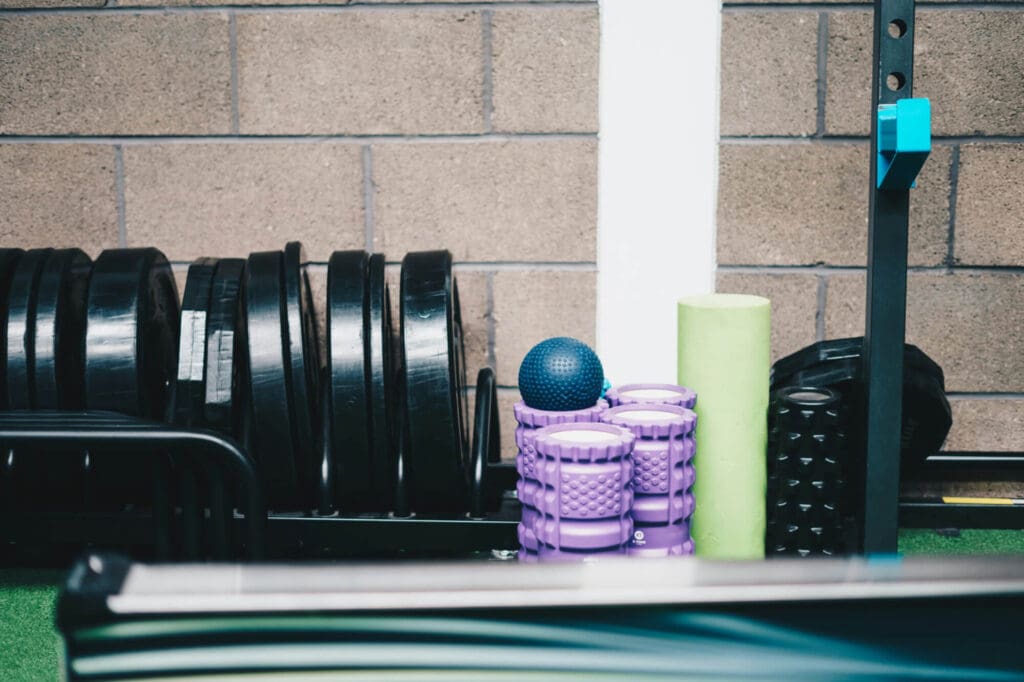
Recovering from Childbirth: Gentle Physical Exercises to Help Heal and Rebuild Strength
After childbirth, your body deserves time to heal. It’s been through a lot! Getting active again, even in small ways, can significantly help in your healing process. Whether you’ve had a vaginal birth or a caesarean section, incorporating gentle exercises into your daily routine can boost your energy, strengthen muscles, and help you feel more like yourself again. In this blog, we’ll go through exercises that support postpartum recovery, while also keeping your body’s new needs in mind.
Why does postpartum exercise matter?
Light movement in the weeks after childbirth offers valuable benefits for both your body and mind. Pregnancy stretches your core muscles and pelvic floor. Physically, exercise can boost your energy levels, strengthen essential muscles, and gradually restore your body’s core stability. Gentle movement, even a short daily walk, can encourage circulation and enhance healing by activating your muscles, without overburdening them.
Emotionally, physical activity releases endorphins. These neurotransmitters, or chemicals, carry messages throughout your body that are produced in the brain and released in response to pain or stress. As a result, you might feel your mood elevated, which will go some way in combatting stress and the baby blues.
Finally, even though newborns may keep you up, exercise helps regulate your sleep cycle and improves overall rest quality. A balanced approach to movement is especially helpful as you adapt to the demands of life with a newborn.
What changes occur during pregnancy?
During pregnancy, your body goes through remarkable changes to support and nurture your growing baby. These changes include:
- Your abdominal and pelvic floor muscles stretch and weaken to support your baby.
- Pregnancy hormones loosen ligaments and joins, making some movements feel unstable or uncomfortable.
- Your centre of gravity changes, often resulting in lower back strain.
As you begin to move more, it’s important to honour these shifts and ease into postpartum fitness to avoid strain or injury.
Exercises to begin with after childbirth
For most women who have experienced a straightforward pregnancy and vaginal delivery, it’s generally safe to start light exercise within a few days postpartum. However, always listen to your body! If you feel any discomfort, give yourself more time to heal. Here are some examples to support your recovery.
Pelvic floor exercises (kegels)
Pelvic floor exercises are key to rebuilding strength in the muscles that support your bladder, uterus, and bowels. These can be weakened from pregnancy and childbirth. To start, try:
- Sitting or lying down.
- Gently contract the muscles you’d use to stop urine flow.
- Hold the squeeze for 5 to 10 seconds, then relax.
- Aim to repeat this about 10-15 times
- Gradually build up the duration and frequency throughout the day.
Tip: This exercise can be done anywhere! As your strength improves, it becomes easier to incorporate into your daily routine.
Tummy muscle exercises
Restoring strength in your core helps with balance and relieves pressure on your back. Start by:
- Lying on your back with your knees bent, feet flat on the floor.
- Slowly draw your belly button towards your spine, engaging your core.
- Hold for a few seconds before releasing.
- Repeat 5-10 times, focusing on controlled movements.
This small movement engages your core muscles without straining them, supporting your overall stability as you continue to heal. Begin with five repetitions and gradually increase as you feel comfortable.
Gentle walking
Walking is an easy way to reintroduce physical activity, and engage your muscles without strain. Start by taking short walks around your home or neighbourhood, gradually extending them as you feel stronger. Walking with your baby in a stroller or sling can be both an added bonding experience, and a chance for fresh air and gentle activity.
Why it’s good: Walking at a relaxed pace helps improve blood flow, which reduces swelling, energises you, and gives a small but meaningful boost to your mood.
Deep breathing with abdominal wall tightening
This controlled breathing helps engage your core muscles and relaxes your body. Start by:
- Lying on your back or on your side with your knees comfortably bent.
- Begin with a deep breath through your nose, letting your abdominal wall rise as you inhale deeply.
- Feel the expansion in your abdomen as it fills with air.
- Then, with your lips slightly parted, slowly blow the air out through your mouth, gently tightening your abdominal muscles as you exhale.
- Continue exhaling until your lungs feel fully emptied.
Tip: Try to avoid too many deep breaths in a row to prevent dizziness, resting briefly between each breath.
Join a class!
Lots of postnatal exercise classes exist. They may also let you participate with your baby at your side, or include your baby and their pram as part of the workout. Do ask your health visitor if they know of any in your area. Alternatively, if you’re going to a class that is not a special postnatal class, make sure you tell the instructor that you’ve recently had a baby.
Remember to take it easy!
If you’ve had a more complicated birth — such as a caesarean section, tearing, or assisted delivery — your body may need more time to recover. If you feel up to it, you can try gentle pelvic floor exercises and light walking. But, take it slow! Avoid straining or lifting anything heavy until you receive medical clearance. Always consult your midwife or doctor if you’re uncertain about when or how to start exercising.
Warning signs to be aware of
It’s important not to push yourself too hard as you ease back into activity. Your body has ways of letting you know if you’re overdoing it, so be mindful of these signs:
- Excessive fatigue
- Feeling unwell or overly drained
- Muscle aches, strains, or unexpected soreness
- Breast tenderness or the appearance of lumps
- A change in lochia (postpartum vaginal flow) back to pink or red
- Heavier-than-usual lochia flow
- Lochia restarting after it had previously stopped
If you notice any of these symptoms, consider slowing down and giving your body more time to recover. As above, always consult your healthcare provider if you’re concerned about any of these signs!
What about high-impact activities?
High-impact exercises, like jogging or aerobics, put pressure on your recovering joints and muscles. For most new mothers, it’s best to wait at least 3 to 6 months before reintroducing these types of activities. In the meantime, focus on low-impact activities like walking, swimming, or gentle stretching, which help rebuild strength without adding undue stress. Patience now will set a strong foundation for a safe return to more intense exercise later.
How can I incorporate yoga and Pilates?
Once you’re about 6 to 8 weeks postpartum and feeling ready, you might explore yoga or Pilates. These practices focus on mindful, controlled movements that can help restore core strength, improve balance, and relieve stress. With guidance, yoga and Pilates encourage gentle rebuilding of muscle strength, flexibility, and stability, while fostering a sense of calm and connection to your body. As always, consult your healthcare provider before beginning a new exercise program, especially if it involves stretching or strengthening activities.
When can I return to my full pre-pregnancy routine?
If you were active before pregnancy, it’s natural to look forward to returning to your usual fitness routine. But keep in mind that your body is in a period of healing and adjustment. It’s advisable to wait at least 6 weeks before resuming regular training and start with modified or shorter workouts. Communicate with any instructors or trainers, letting them know you’re in postpartum recovery, so they can tailor exercises to support your needs.
Most importantly, rest and patience are vital as you navigate this transition, ensuring a safe and sustainable return to fitness.
What if I’m breastfeeding?
For breastfeeding mothers, exercise is safe and can be beneficial, but it’s helpful to keep a few tips in mind.
- Stay hydrated, as hydration supports milk production.
- Opt for a supportive sports bra to maintain comfort during activity.
- Some women find it helpful to feed their baby before exercising to avoid any discomfort from engorgement during their workout.
Exercise shouldn’t impact milk supply, so feel free to enjoy the benefits of movement without worry.
A note on mental health
Taking care of your mental health is just as essential as physical health after childbirth. Studies show that about 1 in 10 women experience depression within the first year after having a baby, a condition known as postnatal depression. Recognising and addressing this is vital for the well-being of both mother and child.
If feelings of sadness or overwhelm persist, or if coping seems challenging, it’s wise to talk to a midwife, health visitor, or doctor. Effective support and resources are available to help mothers navigate this period with the care they deserve.
Big picture: Islam and motherhood
It might be helpful to keep in mind that your journey of pregnancy and childbirth is held in high regard in Islam. The physical and emotional challenges you face do not go unnoticed! Women who endure the trials of pregnancy with patience and perseverance are promised significant rewards. The Prophet Muḥammad (ﷺ) teaches that every difficulty a Muslim faces, even something as minor as the prick of a thorn, leads to expiation of sins [Bukhārī 5641, Muslim 2573]. Every moment of difficulty, from labour pains to sleepless nights, is seen and rewarded by Allah ﷻ.
One of the most powerful examples of resilience and divine recognition in motherhood is the story of Maryam (as). The Qur’ān beautifully reminds us of her patience and strength during childbirth:
“And the pains of childbirth drove her to the trunk of a date palm. She cried, ‘Oh, I wish I had died before this and was a thing long forgotten!’” (Qur’ān 19:23)
Despite her immense pain, Maryam’s (as) story affirms that Allah sees, understands, and supports mothers in their most vulnerable moments. He provided her with sustenance, comfort, and reassurance. Her experience serves as a timeless reminder that no struggle goes unnoticed by Allah ﷻ. He is the All-Knowing, fully aware of every hardship, offering His divine mercy when it is needed most.
Secondly, during the postpartum period, known as nifās, women are granted relief from obligatory acts like prayer and fasting. It might feel confusing to have a long period without certain worship. But it’s not a spiritual setback. Rather an opportunity for rest, renewal, and healing. Submitting to Allah’s command by taking this rest is, in itself, a form of worship — one of the heart and mind, through which we can still strive for spiritual excellence. The Prophet Muḥammad (ﷺ) taught us acts of worship outside of prayer and fasting. Even the quiet dhikr, sincere du’ā, and caring for oneself and others, can be deeply spiritual. This time of pause allows you to focus on recovery without guilt or spiritual anxiety. After this period, you can return with a renewed sense of purpose and strength.
Thirdly, in Islam, the body is considered an amānah (trust) from Allah ﷻ, deserving care and nourishment. Resting, eating nourishing foods, and gradually introducing gentle movement all align with honouring your body. Exercise after childbirth should be approached with intention. It’s not for external validation, but as a means of regaining strength, supporting mental well-being, and caring for your health. With the right intention (niyyah), even small steps toward physical recovery are valuable!
Finally, you’re on the path to an incredibly noble act! To raise the next generation of Muslims who worship Allah and follow the guidance of the Prophet Muḥammad (ﷺ) is a beautiful intention. We hope you’re proud of yourself, because we are!
Final thoughts: Keep it slow and steady
Postpartum recovery is a journey unique to each woman. The path to healing is rarely linear. By taking small steps — whether walking, stretching, or practising pelvic floor exercises — you’re nurturing your body with the attention it deserves. Listen closely to what your body needs, and if you’re ever unsure, seek guidance from your healthcare provider. As you progress, you’ll naturally feel ready to increase the intensity of your workouts, but remember that rest is as valuable as movement.
Enjoy this period of healing, celebrating the resilience and strength within you. As you embrace gentle movement, know that you’re doing something wonderful for both yourself and the little one by your side. You are also never alone. Allah ﷻ is with you, seeing every effort, every tear, and every act of love. You are honoured, valued, and cherished.

